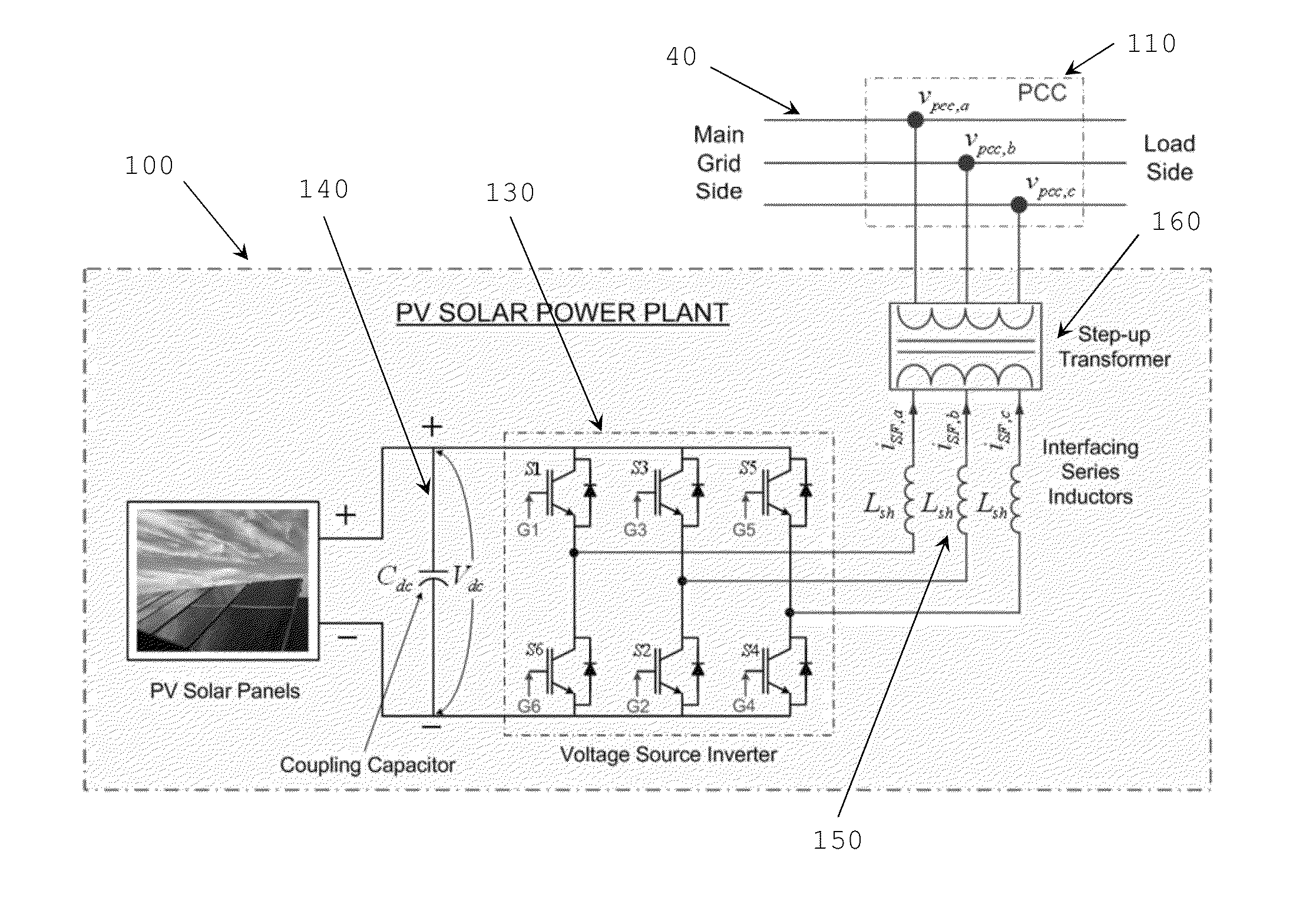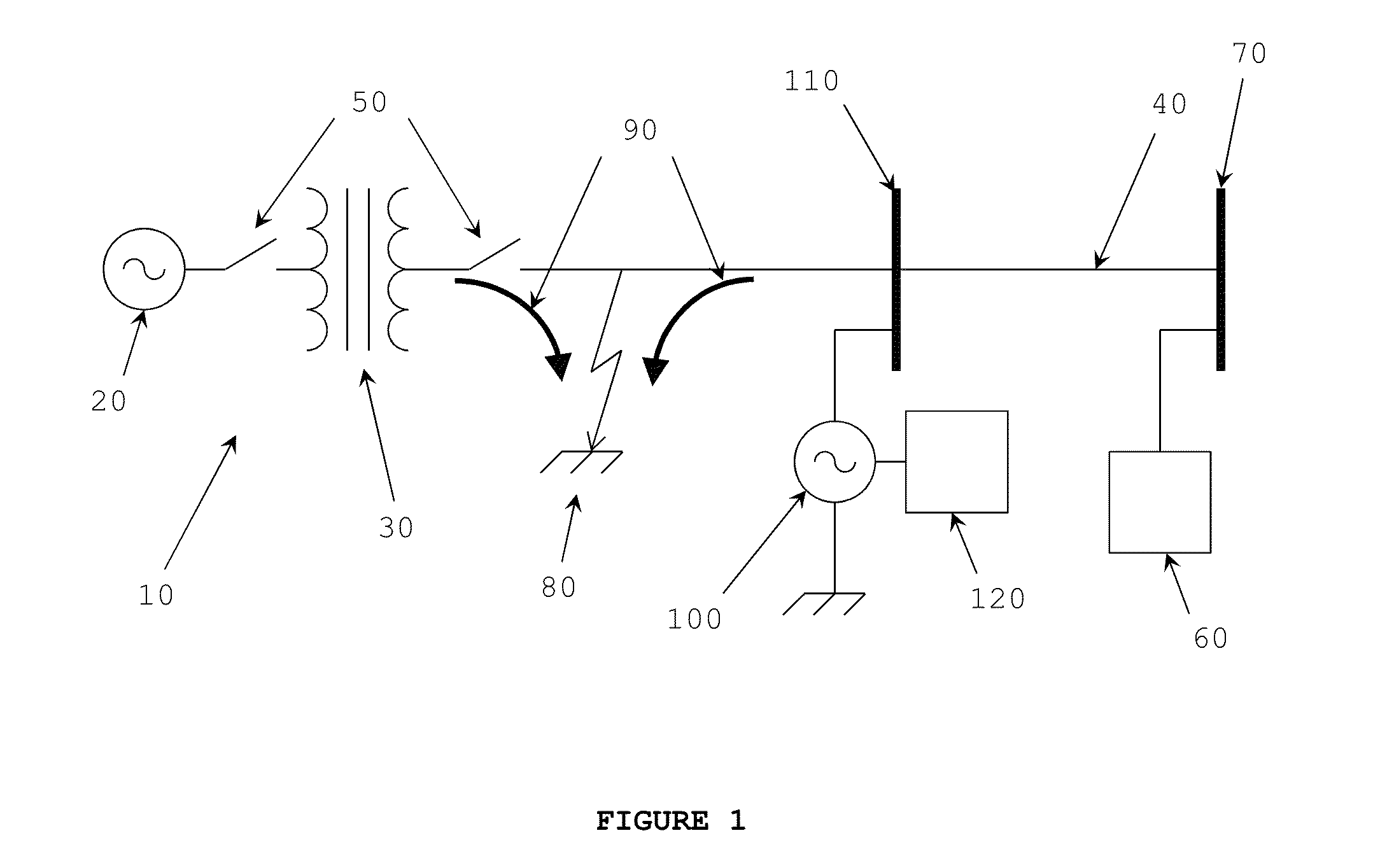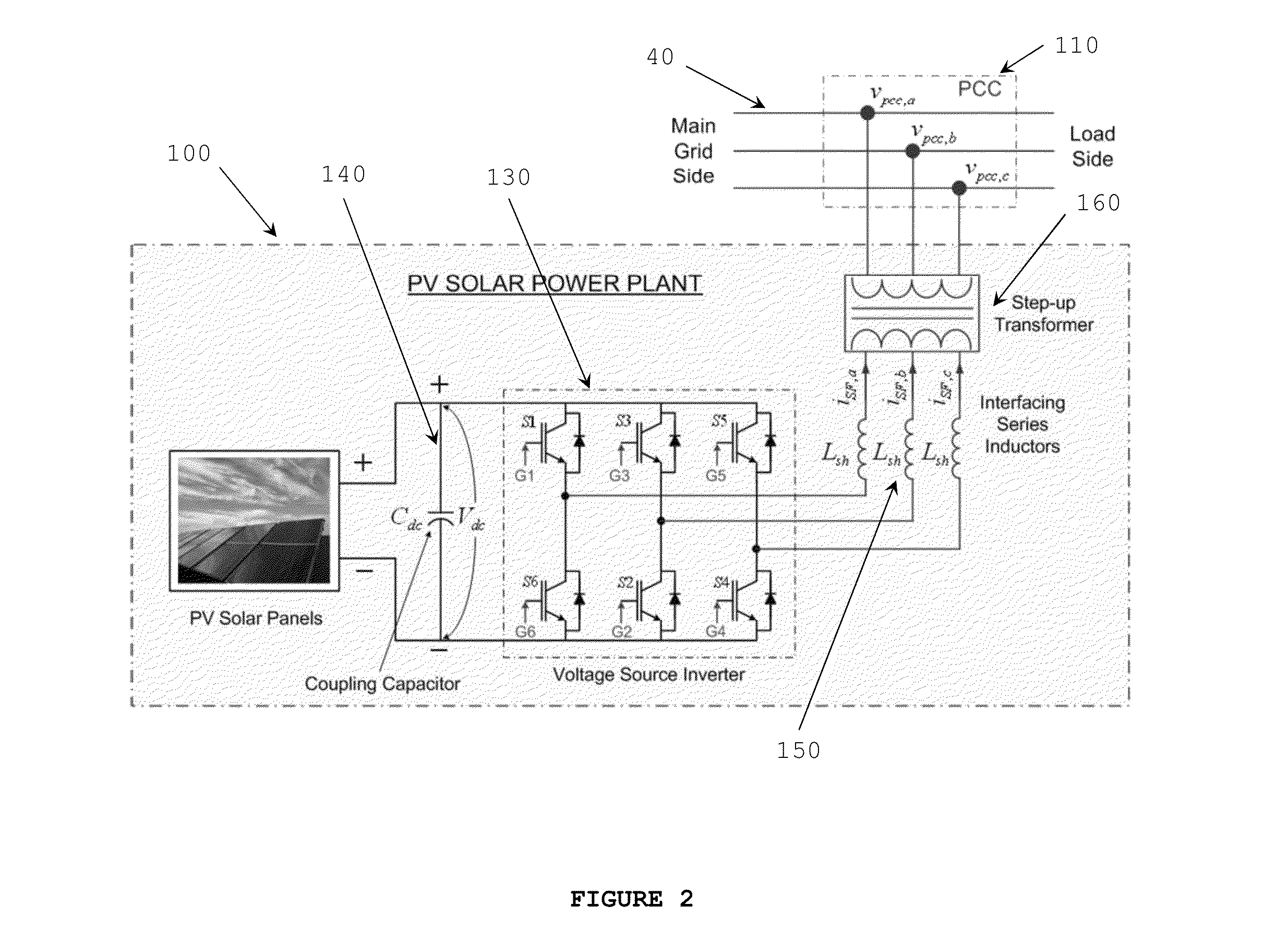Fault detection and short circuit current management technique for inverter based distributed generators (DG)
a distributed generator and fault detection technology, applied in circuit arrangements, emergency protection arrangements for automatic disconnection, electrical equipment, etc., can solve problems such as new problems and problems of existing power systems, failures exceeding the design limit of the network, and the integration of more distributed generators to the network
- Summary
- Abstract
- Description
- Claims
- Application Information
AI Technical Summary
Benefits of technology
Problems solved by technology
Method used
Image
Examples
Embodiment Construction
[0033]The terms “coupled” and “connected”, along with their derivatives, may be used herein. It should be understood that these terms are not intended as synonyms for each other. Rather, in particular embodiments, “connected” may be used to indicate that two or more elements are in direct physical or electrical contact with each other. “Coupled” may be used to indicate that two or more elements are in either direct or indirect (with other intervening elements between them) physical or electrical contact with each other, or that the two or more elements co-operate or interact with each other (e.g. as in a cause and effect relationship).
[0034]The disclosed embodiments herein are merely exemplary, and it should be understood that the invention may be embodied in many various and alternative forms. For purposes of teaching and not limitation, the illustrated embodiments are directed to a method of fault detection and short circuit current management in a DG system using a solar farm inv...
PUM
 Login to View More
Login to View More Abstract
Description
Claims
Application Information
 Login to View More
Login to View More - R&D
- Intellectual Property
- Life Sciences
- Materials
- Tech Scout
- Unparalleled Data Quality
- Higher Quality Content
- 60% Fewer Hallucinations
Browse by: Latest US Patents, China's latest patents, Technical Efficacy Thesaurus, Application Domain, Technology Topic, Popular Technical Reports.
© 2025 PatSnap. All rights reserved.Legal|Privacy policy|Modern Slavery Act Transparency Statement|Sitemap|About US| Contact US: help@patsnap.com



